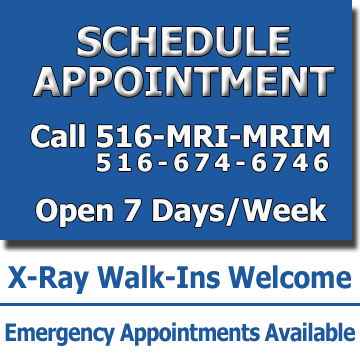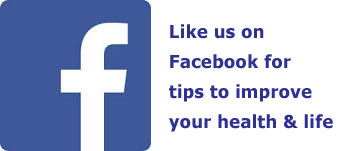When the massive January 12 earthquake rocked the flimsy infrastructure of Haiti’s largest cities and surrounding towns, radiologists were among the throngs of medical personnel who quickly mobilized to aid the millions left suffering in the devastation’s wake.
Those who responded said there was no question whether they would act—it was simply a matter of when and how. Whether leveraging existing relationships with aid organizations and Haitian-based hospitals or tapping individual reserves to remotely aid patients from home, radiologists, technologists and other physicians wasted no time reaching out to aid the battered survivors.
“I was in a place where I had the ability to help,” said Barb Tomasini, R.T.R., C.V., R.C.I.S., of St. Alphonsus Regional Medical Center in Boise, Idaho, and a long-time volunteer at St. Damien Hospital, the only free pediatric hospital in Haiti. “If you are able, cross that line and start helping. My door was opened in 1997 when Project Haiti of the Saint Alphonsus Foundation asked for my assistance.”
“I Saw 250 Kids in Five Days”
One radiologist who has also frequently traveled to Haitian medical facilities in recent years was actually scheduled to be in Port-au-Prince the day the quake hit.
“I was supposed to be in a hospital that actually collapsed,” said Gia DeAngelis, M.D., an associate professor of clinical radiology at the University of Virginia in Charlottesville.
Instead, Dr. DeAngelis arrived in Haiti a few days after the earthquake as part of a previously planned trip to continue her work with Doctors Without Borders training Haitian medical staff to use ultrasound equipment.
Dr. DeAngelis immediately began treating the injured and conducting clinics in remote areas closest to Cap Haitien, the country’s second largest city located about 80 miles from Port-au-Prince, which took the biggest hit from the quake.
“Cap Haitien doubled its population,” Dr. DeAngelis said. “The mayor was busing in people from Port au Prince.
“It was amazing that people found us,” Dr. DeAngelis continued. “The injured found the clinic on their own. If patients had fractures, we set them. One girl’s fibula was sticking out, so we cleaned it and she got further treatment at a local hospital. I saw 250 kids in five days.”
The vast need for basic services was overwhelming at times, Dr. DeAngelis said.
“If patients had open fractures, we poured in water along with a small amount of betadine and kept doing that,” she said. “Then we set the fracture by hand and kept it in traction. Very few of those people ended up with an infection. That was the greatest need during the first days of the earthquake.
“Aid was coming in, but if we had 1,000 Boy Scouts trained in basic First Aid, we could have only done so much,” she concluded.
Reliable Images a Rarity
For Daniel D. Ivankovich, M.D., an orthopedic surgeon at Rush Presbyterian-St. Lukes Hospital in Chicago, getting reliable images of the injuries presented a challenge during the first few days he spent on the ground.
After arriving in Haiti on January 21, Dr. Ivankovich began working 20-hour days to aid victims. He dropped off supplies at a Port-au-Prince hospital and then drove to remote areas miles from the capital city hub, finding and treating patients with spinal cord injuries.
“A lot of our diagnostics were made in the field, localized by clinical exam,” Dr. Ivankovich explained. “Half the patients were x-rayed, but the image didn’t include the spine injury. I was happiest on the day we got the C-arm working so we could actually scan patients’ bodies for fractures and injuries because the X-rays we had weren’t adequate.”
For Tomasini, the tragedy offered a first-hand look at the impact–and good fortune–of her previous volunteer work at St. Damien.
When St. Damien received funds several years ago to purchase a digital X-ray machine and PACS station, Tomasini was asked to help design the hospital’s new radiology department. Because lead sheeting for the x-ray department was too expensive, she asked the builders to consider using cinder block filled in with concrete. The radiologic equipment survived the earthquake within the department’s 8-inch thick concrete walls.
“It was meant to serve as radiation protection but it ended up being earthquake protection,” she said. “It not only saved lives, it saved the digital X-ray equipment. Casualties from the earthquake were being imaged within an hour of the disaster.”
The solid infrastructure also kept the radiation department running.
Teleradiology Offers Lifesaving Link
After Allen Rothpearl, M.D., of Westbury, N.Y., heard about the functioning radiology services at St. Damien, he contacted Tomasini and offered teleradiology services to the physicians at the Haiti hospital.
As CEO of Complete Radiology Reading Services (CRRS), Dr. Rothpearl said he was eager to donate the company’s human and technological resources to create a link between the overwhelmed physicians in Haiti and his radiology center in New York.
Dr. Rothpearl explained, “It turned out that Viztek, the company that makes the PACS used by St. Damien, is one we use at CRRS and we know the engineering staff quite well,” he said. “It was a Saturday and I said, ‘Let me give them a call and see if I can get some help setting this up.’ I got an engineer on the line and we spent all day Saturday and into the night working, and we eventually set up the link. I was very excited. At midnight we actually sent the first case over.”
The remote hookup allows volunteer radiologists in New York to see all of the images—often numbering 40 to 50 per day—from St. Damien. Dr. Rothpearl said his company plans to continue the service for an indefinite period to fill in the gap left when non-local, on-site physicians from other countries leave the facility.
“I’ve seen crushed pelvises, horrible, horrible fractures and injuries that would be major surgical emergencies in the U.S.,” Dr. Rothpearl said. “I’m amazed how they deal with that type of injury.”
Tomasini said she is thankful she was able to serve as a conduit for Dr. Rothpearl, who had been frustrated in his efforts to connect with an organization willing to take advantage of his teleradiology services. In fact, he was turned down several times. To her it showed that perseverance wins against all odds.
“Dr. Rothpearl has shown that radiologists can contribute their time, talent and expertise without going to Haiti,” Tomasini said.
“I think part of the problem is the huge bureaucracies people have to deal with,” he said. “I basically did the link-up myself with the help of a Viztek engineer and a hospital liaison at St. Damien’s. We had a common goal and we did it. Period. End of story.”
Life-Defining Experiences Offer Lessons
Dr. DeAngelis believes the difficulty mobilizing, communicating and getting medical supplies to the injured should serve as a valuable lesson for the future.
She explained, “If there’s an emergency, we need to treat it like one. When that earthquake hit, the emergency was that day. To really do the most good, you have to clean people’s wounds within 24 hours. That’s how you’re going to save people’s limbs.”
All volunteers agreed that their experiences in Haiti were life-changing.
“It was very emotional,” Dr. Ivankovich said. “I cried every night. If you had too much down time to think about what you did, it was overwhelming.
“As physicians, this kind of experience helps define who we are,” he added. “In the face of this kind of severe catastrophe, suffering and trauma, you find out who you are as a doctor.”
Copyright © 2010 Radiological Society of North America, Inc., 820 Jorie Blvd, Oak Brook, IL 60523-2251 Tel. 1-630-571-2670 || fax 1-630-571-7837 || U.S. and Canada: Main 1-800-381-6660, Membership 1-877-RSNA-MEM (776-2636)




